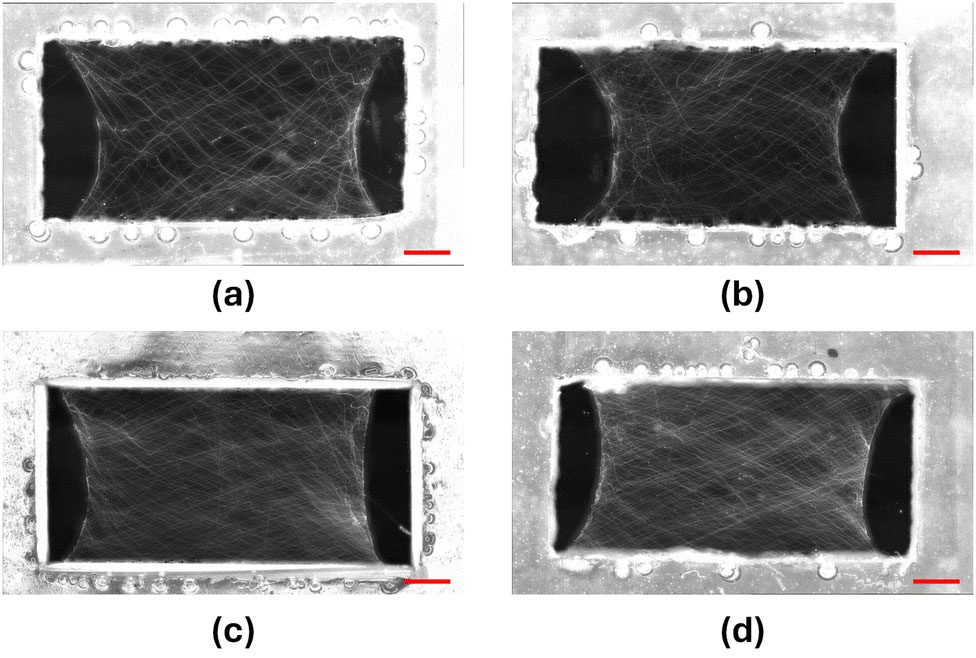News
SDSC Resources Enable Breakthrough in Fiber Network Materials Research
Published July 29, 2025
By Revah Navamshan and Kimberly Mann Bruch

Researchers from Rensselaer Polytechnic Institute (RPI) and the University of Illinois Urbana-Champaign have achieved a significant breakthrough in understanding materials composed of a network of fibers. They discovered that adding tiny particles to a network of fibers creates stiffening with minimal reinforcement — a principle that could revolutionize medical implants and lab-grown tissues by replicating how natural materials achieve both strength and flexibility.
The team combined two types of experts: scientists who create three-dimensional print fiber networks and computer modelers who run massive simulations. The project required extensive computational modeling of networks containing millions of fibers. With funding from the U.S. National Science Foundation (NSF)’s Civil, Mechanical and Manufacturing Innovation (CMMI) program, the team had access to both fabrication technologies and processing capabilities necessary for complex calculations, which were run on the Expanse system at the San Diego Supercomputer Center (SDSC) — part of the School of Computing, Information and Data Sciences (SCIDS) at the University of California San Diego.
"The computational power provided by SDSC through NSF ACCESS allocations was an essential element to our research," said RPI Mechanical Engineering Professor Catalin Picu. "We were able to model complex fiber networks and validate our findings through controlled laboratory experiments."
To understand this research, think of a spider web. In certain types of networks called "athermal" networks, the web's strength depends only on how strong each strand is as well as the network architecture. The team’s discovery involved what happens when researchers add small reinforcements at specific spots in the structure. Unlike other materials, fiber networks behave differently because they are randomly connected, allowing stress to spread through multiple pathways. When reinforcements are placed strategically within these networks, they create a cooperative effect that dramatically increases the material's strength.
“Current medical materials often fail because scientists are unable to produce collagen with the structure and properties of the collagen produced by cells in vivo. When engineered tissues can't handle the normal forces inside the human body, they break down,” Picu said. “Our research provided correction factors that improved existing medical designs as we created tiny fiber networks using specialized 3D printing — these fibers are so small that tens could fit across a human hair.”
Picu and the team then tested how these reinforced networks stretch and break, and used the results to improve models running on Expanse at SDSC. This created a feedback loop where computer simulations and lab experiments informed each other.
“While lab experiments might take months to test just a few designs, computer simulations on Expanse tested many variations in days,” Picu said. “This approach helped us explore material possibilities that would take decades to test physically and allowed us to design better materials that could be used for everything from implants to protective gear.”
The team’s work provided useful formulas that can improve current medical designs.
“Catalin’s project demonstrates how ACCESS cyberinfrastructure allows for transformative research that would not be possible through conventional experimental approaches alone,” said ACCESS Coordination Office Principal Investigator John Towns. “This new way of better predicting and controlling how tissues behave could transform treatments like heart patches, bone repairs, cell-growth scaffolds and custom-made implants — making reconstructive medicine safer and more effective for millions.”
This research was published in Soft Matter.
The work was supported by the NSF (grant nos. CMMI-2022489, 2022471). Computational work was supported by NSF ACCESS (allocation no. MCH230052).

